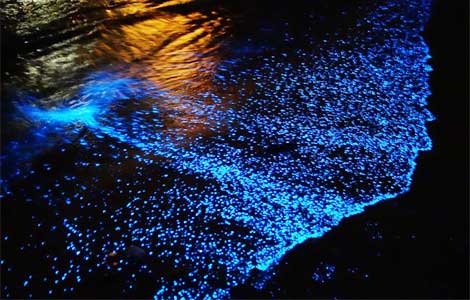Painting the past
Updated: 2014-01-22 09:26
By Ma Lie and Lu Hongyan (China Daily)
|
|||||||||||
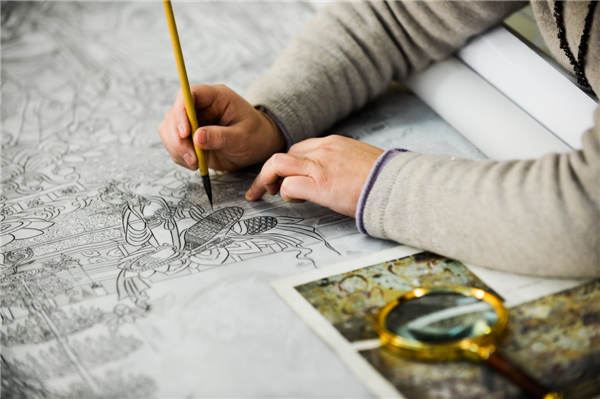 |
|
Yang sketches a mural before painting it on the wall. Photos by Liu Xiao / Xinhua |
Two artists have dedicated their lives to reproducing the Dunhuang murals, capturing some of the glory of the Tang Dynasty. Ma Lie and Lu Hongyan report from Xi'an, Shaanxi province.
Yang Dongmiao and her husband Jin Weidong are happy and excited - their dream of reproducing full-sized Dunhuang murals is going to come true. "We plan to open our caves to the public on Feb 25, after we finish the murals of the No 45 and No 220 grottoes of the Mogao Grottoes," Jin says. The couple is busy putting the final touches on the murals in their two "grottoes" located on a street that celebrates the heritage of the Silk Road in Xi'an, capital of Shaanxi province.
Some 320 square meters of murals, similar in size to those in the Mogao Grottoes, a UNESCO world heritage in Dunhuang, Northwest China's Gansu province, are almost complete.
The Mogao Grottoes, that date as far back as AD 366, contain more than 45,000 square meters of murals in 735 caves. The grottoes are among the best-preserved Buddhist art treasures in the world.
Yang and Jin started their reproduction of the ancient murals in the two grottoes in 2011, as part of a tourism project to recreate some of the glory of the Tang Dynasty (AD 618 - 907), China's most prosperous dynasty which chose Xi'an (known as Chang'an in ancient times) as its capital.
"We got the opportunity and financial support from the project developer to realize our long-held dream of completely reproducing the full-size murals in the No 45 and No 220 caves," Yang says.
Related Stories
Intangible cultural heritage: Maoqiang Opera 2014-01-16 10:59
Tell a good story 2014-01-15 10:06
Lingnan culture on display 2014-01-13 15:39
Nanjing museum exhibits odd-shaped relics 2014-01-09 11:26
National intangible heritage: row lantern in NW China 2014-01-08 09:53
Today's Top News
Xi Jinping to lead national security commission
Abe floats hawkish plan
Naval hotline urged to tackle conflict
Dec worst air quality month of 2013
FM emphasizes China-WEF cooperation
December worst air quality month
China denounces Abe's remarks
Another bumper year 'possible'
Hot Topics
Lunar probe , China growth forecasts, Emission rules get tougher, China seen through 'colored lens', International board,
Editor's Picks
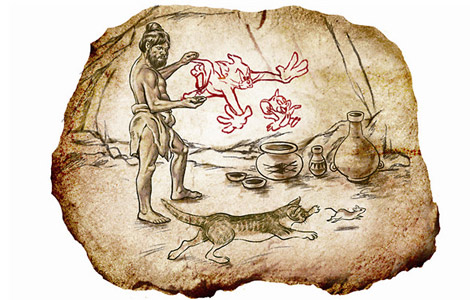
|
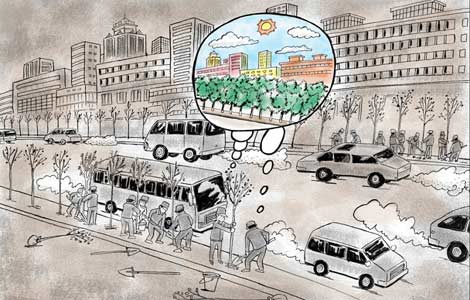
|

|

|

|
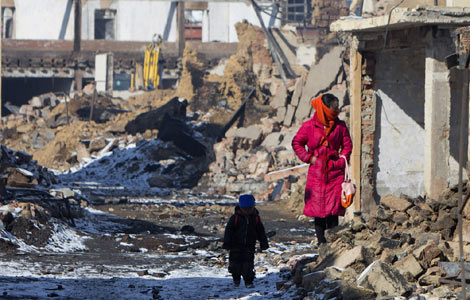
|


